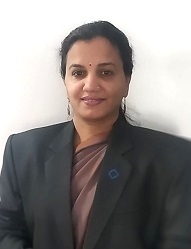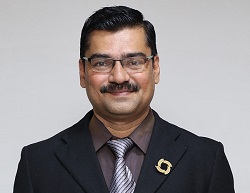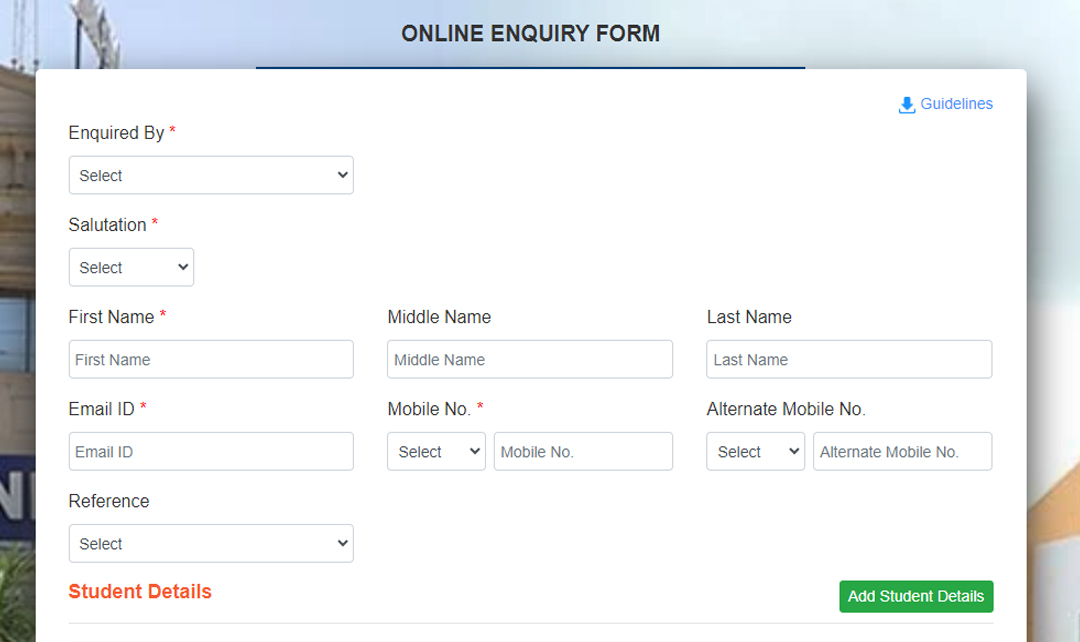
Ashoka Business School
Minority Institute (Linguistic)
Recognized by AICTE-New Delhi, DTE-Mumbai & Govt. of Maharashtra
Affiliated to Savitribai Phule Pune University

THE INSTITUTE
FACULTY & RESEARCH
THE FACULTY OF ASHOKA BUSINESS SCHOOL are committed to generating knowledge and ideas to enhance management practice and learning in the classroom.
ABS looks to be a stature as a practical and research-oriented institute And is moving ahead in the direction since inception. The faculty at ABs have contributed more than --- articles to reputed journals.
FACULTY
A team of outstanding Full time and visiting faculty teach at ABS. The School also invites visiting scholars each year.
RESEARCH
The School aims to be a research-driven institute and to further this vision it nurtures and creates a vibrant environment that encourages research.
AN ECLECTIC AND ACCOMPLISHED TEAM OF FACULTY teach at ABS. The current team permanent faculty is the best chosen on the basis of their research excellence and teaching acumen.
Visiting faculty with high industrial and academic experience also teach at ABS, bringing perspectives into the mix and enriching it further. This dynamic research environment is made even more vibrant by the visiting scholars and research scholars at the School.
LIST OF APPROVED FULLTIME TEACHERS-
| Sr. No. | Name of the Faculty | Designation | Date of Joining | Qualifications | Specialization | Teaching Experience | Industry Experience |
|---|---|---|---|---|---|---|---|
| 1 | Dr. Narendra Telrandhe | Professor | 8/1/2020 | Ph.D., MIMS, PGBDM | Marketing | 14 | 22 |
| 2 | Dr. Sarita Dhawle | Director I/c.A ssociate Professor | 04-05-2019 | Ph.D., M.B.A.-HR, M.C.M., PGDIM. | Human Resource Management | 14 | 06 |
| 3 | Dr. Vaibhav Bhalerao | Associate Professor | 15-06-2015 | Ph.D., M.Sc., MBA-Marketing, | Marketing | 20 | 2 |
| 4 | Dr. Mahesh Wagh | Associate Professor | 15-03-2023 | Ph.D., MBA, M.Com, LLB | Human Resource Management | 14 | 6 |
| 5 | Ms.Manisha Bhamre | Asst. Professor | 18-07-2013 | MPM, LLB, B.Sc. | Human Resource Management | 17 | - |
| 6 | Ms.Pooja Gholap | Asst. Professor | 03-12-2018 | Ph.D., M.Com., PGP | Finance | 8 | 1.5 |
| 7 | Dr. Leena Gorhe | Asst. Professor | 27-06-2022 | Ph.D., MPM,M.Com | Human Resource Management | 14 | 1 |
| 8 | Dr. Vrushali Ahire | Asst. Professor | 06-03-2023 | MCM, Ph.D | Computer Management | 14 | 0 |
| 9 | Ms.Pooja Kushare | Asst. Professor | 14-09-2022 | MBA, B.Com | Finance | 8 | 2 |
| 10 | Dr. Hemant Wanjare | Asst. Professor | 03-05-2023 | Ph.D, MBA, B.Com | Marketing | 12 | 10 |
| 11 | Dr. Nainesh Mutha | Asst. Professor | 03-05-2023 | Ph.D, MBA, B.E. | Marketing/Operations | 11 | 6 |
| 12 | CA.Swapnaja Prabhune | Asst. Professor | 01-04-2018 | CA, M.Com, | Finance | 5 | 6 |
| 13 | CA. Wrushali Bhamare | Asst. Professor | 08-01-2024 | CA, MBA | Finance | 1 | 10 |
| Sr. No. | Name of Faculty Member | Conferences Attended/Organized | No. Of Research Papers in Journals | Books/Articles in Book | Invited as an Expert/Resource Person |
|---|---|---|---|---|---|
| 1 | Dr. Vikas Gaundare | 16 | 10 | 02 | 06 |
| 2 | Dr. Sarita Dhawale | 12 | 11 | 03 | 04 |
| 3 | Ms. Manisha Bhamre | 10 | 6 | - | 06 |
| 4 | Mr. Vaibhav Bhalerao | 12 | 16 | - | 01 |
| 5 | Mr. Harshal Dayma | 03 | - | - | 03 |
| 6 | Ms. Pooja Kushare | 04 | 03 | - | 03 |
| 7 | Ms. Tanaya Patil | 05 | 09 | 01 | 01 |
| 8 | Ms. Pooja Gholap | 06 | 05 | - | - |
| 9 | Mr. Nainesh Mutha | 04 | 04 | 01 | 04 |
| 10 | Mr. Ashwin Amrutkar(Librarian) | 04 | 04 | 01 | 01 |

20TH FEB'-WORLD DAY OF SOCIAL JUSTICE
20TH FEB'-WORLD DAY OF SOCIAL JUSTICE Martin Luther King-‘Injustice anywhere is a threat to justice everywhere.‟
It is not about judicial justice alone.Judicious society is expected to ensure a just regime across color, creed, class, caste – any social barrier for an inclusive system so that nobody is excluded because exclusion is also against the tenets of social justice. The inclusive society is expected to ensure equal opportunity, fair deal and does not deprive anyone. This is enshrined in World Day of Social Justice (WDSJ), which the United Nations General Assembly decided to observe on February 20 every year as WDSJ to encourage people to see how social justice can affect in eradicating poverty.Social Justice is the only condition on which peace and respect between the Nations in a connected world rests. It is a day that recognizes the need to promote efforts to tackle issues such as poverty, exclusion and unemployment.
Today the cry for social justice has become loudly clear and shrill! A cry which till late was the prerogative of only the poor and the marginalized has also become the cry of several from across the social strata who want their voices to be heard; the list includes students ,academia and intellectuals, litterateurs and poets, film-makers, playwrights and other celebrities etc. The cry,“We want Justice!” is the same everywhere reminding us of the uprising of workers led by trade union leaders of yesteryears. But this time things have changed.Though the script remains the same, the „dramatis personae‟ has changed. Those who cry out are not just crying out for themselves – they are crying out for the rights of others, for the sanctity enshrined in the Constitution, for democracy, for the children of tomorrow!
Indian society has been striving for ages to ensure equity and justice. Some of the most devoted workers for social justice in the history of India have included ChaitanyaMahaprabhu, Swami Raavidas, Swami Vivekananda, Veer Savarkar, M. Gandhi, Dr.Ambedkar, TarabaiShinde, B.Malabari among others.
The Constitution of India accepts the use of social justice in wider sense, which includes both social and economic justice.
As a measure to facilitate Social justice, India has enacted a comprehensive Protection of Women from Domestic Violence Act which recognizes that violence can take various forms, including physical, economic, social and psychological. This act provides a legal tool for women to fight both marital violence and familial abusewithin the family.

MOBILE PHONES IN THE CLASSROOM RIGHT OR WRONG?
Now a day the trend is open learning atmosphere where students are given full freedom to use mobiles and other technology in classrooms. The learning becomes fast and long term when they understand some concepts relating to some cases.Students are the stakeholders of the colleges and so all business schools are focusing on providing them that constructive and positive learning atmosphere. Thinking out of the box becomes possible only when they are given full opportunity to learn ,express and implement what they have gained actually .Students are the pillars of any business school .The Telecom industry is now ready with a platform for these students to help themselves in this conducive learning process as a partner. The use of mobile in the classroom helps them to become global and remain in touch with the current up comings. On the other hand, using mobile in classroom can lead to more of distractions and no recall of the content later on. In a study, people examined the impact of mobile phone usage, during class lecture, on student learning. Participants in three different study groups (control, low-distraction, and high-distraction) watched a video lecture, took notes on that lecture, and took two learning assessments after watching the lecture. Students who were not using their mobile phones wrote down 62% more information in their notes, took more detailed notes, and were able to recall more detailed information from the lecture. This was a huge difference when we compared the performance with those who were using mobiles.
It has certain drawbacks too. When we talk about teenagers, they are mobile-first internet users. They own a Smartphone and they use it to a greatest extent. The presence of cell phones is acceptable both opportunities and challenges for today's students. Mobile phones can be a helpful academic tool, or a hurtful academic disruption totally depends upon the attitude, usage and policies of the schools they attend. Mobile is more convenient if we compare it with traditional system. Because of mobile phones, students never have to look for a pay phone or wonder about the location of a friend. This communication tool allows students to reach their peers and their parents in short span of time. Everything from ordering a pizza to calling to check movie has become easiest task with a cell phone, as the communication device you need is right at your fingertips.According to the 2012 World Bank report, the availability of mobile phones had reached to almost three quarters of the world’s population.The popular trend has developed for so many reasons and has a lot to say about us. When cellphones were first created they were “car phones” as they were too large to carry around in a pocket or hand bag. However, in 1983 Motorola Dyna Tac 800X arrived on the market. Though it would seem big to our eyes it was rated to be the first mobile phone because it was small enough to carry and handle.Any gadget can be used for destruction as well as construction. Mobile/smartphone is one of them which can play a major role in any person’s life who owns one. As per students point of view, it is a constructive material for their studies but some of them using it in a destructive way.Disciplinary action at right time is always required, so that any big problem can be avoided in well advance .There are many places where we should avoid using mobile phones like changing rooms, swimming pools, Gyms, Toilets, Bathrooms etc. Now a day, mobile is the necessity. It has become a crucial part of our life. It is therefore important that we should not allow students to carry phones during lectures or even if they are carrying, we must tell them, the level of disturbance it leads to. The students respond to their cellphones in the lectures.The function of a mobile phone has developed into entertainment.There are cases where students use their mobile phones for both bullying and cheating.Undoubtedly, mobile phones have become a great part of our society, but we need to see the impact of it on students learning and grasping abilities too. The usage of smartphone during the lectures is not only degrade the performance of the students but also create disturbing environment for the other student.I will suggest that students could be allowed to use them in cases where the teachers themselves ask them to do so.If parentsand teachers want their children to stop using smartphone, they themselves should refrain themselves first from using one, says a child Psychiatrist Director.

MIRRORING STRESS FREE EDUCATION THROUGH€“EDUCATIONAL CREDIT-AUDIT SYSTEM.
Everyone agrees in the development towards Indian education system. Since the thought poked me, I thought it is to be apt to put if forth for reading first and discussion on various platforms to work genuinely towards development of Indian education system.
As per me, I can call it as “Educational Credit-Audit system”. I am very sure this is everybody‟s topic from parents, students, educators, boards of studies on education etc. Before begin, I will introduce the “Credit- Audit” system in education. Many of you know this term in terms of accounts, finance and banking system, but can relate it to education? My answer is, yes. This term Educational Credit audit came in to mind when I went through many universities URL‟s to study variant of educational system.
If I stress to a lot, I know, in India like IIIT, IISER and NIT‟s have opted this system partially many years back. Students get liberty to choose the courses which he/she would like to take up. The choice mostly depended upon which subjects would be useful for the research. Each subject/ course had a “Credit” (weight-age) assigned to it. The student had to choose the course such that the minimum threshold of the “Credits” is fulfilled. The students would be required to give exams for these courses and would be evaluated against these courses only. In a scenario where students feels that he would like to study a course which he is interested in but would not like to give exams for this course he could “Audit” that particular course, provided his minimum threshold of the credit has been met.
When the student is interested to opt for the some course genuinely for knowledge purpose, but the course is not going to contribute towards his/her domain or research area. In this case students shall “Audit” this course. He/ She shall attend all the lectures of this course, but not compulsory to appear for the exam. As a result student would be able to get the knowledge in which he/she is interested, but was not stressed to write the exam. –A Win Win situation.
If students are very interested in a certain topic but it isn't applicable to your major or graduation requirements, auditing a course can be a perfect way to learn more while preserving a high grade point average. Auditing is a low-risk way to learn more about a certain subject or investigate a potential new major or career choice. If students are very interested in a certain topic but it isn't applicable to your major or graduation requirements, auditing a course can be a perfect way to learn more while preserving a high grade point average. Auditing is a low-risk way to learn more about a certain subject or investigate a potential new major or career choice.
In my case, when I opted a course of graduation in Computer Science, the subjects like Maths, Stats & Electronics subjects were complementary with it and had no choice to either credit or audit a single subject, often a few students genuinely were not interested in Stats, Maths while others may not be interested in electronics Hence, if we propose “Credit –Audit education system” after 10th standard till higher education. Students will have the freedom to choose the subjects which they want to genuinely study and appear for the exams. These subjects would be called the “Credit” subjects and the marks scored by the students in these subjects would be taken into account for the final tally. And students can choose for “Audit” the other subjects, if the students are interested to learn, they can even attend sessions and appear for the exams of these subjects if they wish to. Only thing to relieve from stress & burden is outcome i.e. marks in these subjects would not be considered to qualify. This would certainly relieve the burden on the students. This puts a lot of undue stress on the students, which sometimes results into many unfortunate incidents.
An educational credit-audit system would create an atmosphere which is more conducing to „learning‟ than „studying‟. Also the number of options to choose from must increase. This would expose the students to the real outside world and would help them to make an educated choice. This would also give a level playing field to students who may not be so good in academics but are good at work with hands.
The suggested practice might have been already implemented or on the way to carry in coming sessions by few boards or university. But this needs to be propagated on extensive way to go to 2020.

CREDIT RATING AGENCIES €“ PROTECTOR OF THE PREDATORS OR SUPPORTER OF THE INVESTORS ?
The spectacular failure of Infrastructure Leasing & Financial Services Ltd. has suddenly focussed the attention on the role played by the Rating Agencies in India. In this context it would be worthwhile to look at the role played by these Agencies.
Credit ratings are grades assigned to financial instruments by the Credit Rating Instruments (CRA). These grades signify the credibility of the issuer in terms of its ability to pay back the principal and interest on a regular basis. Funds are raised by private firms, institutions,organisations and even the government through various financial instruments The ratings given by these agencies serve as guidelines to investors for taking prudent decisions about investing. Rating symbol can be easily understood by an investor who needs no analytical knowledge and quick decisions about investment can be made in any particular rated security of a company by the investor. Ratings are given according to the perceived safety of an instrument ranging from AAA to D. “AAA” denotes the highest safety whereas D indicates high chances of default. The rating symbols carry information in easily recognisable manner for the benefit of investors to perceive risk involved while investing.The rating agencies charge fees from the Issuers of the financial instruments. This practice is called “ISSUER PAYS” model. This gives rise to the problem of conflict of interest.
Dhirendra Kumar, CEO of Value Research says “"Investor is not protected if bond issuer signs the cheque". Saying this, he shines light on the role played by the credit rating agencies.As we follow the ‘issuer pays’ model the issuers of the debt instrument pays for obtaining the ratings they expect and if, their expectations are not met or if they are not happy with the services provided by any agency they go to another one. This does not serve well for the investors as it only leads to achieving the goal of the company. Unrealistically optimistic ratings are at the root of every debt blow up.Crisis of 2007-08 in the US and IL&FS crisis in India in 2018 are a few examples that should put a question mark in minds of the investors – whether the credit ratings given by these agencies are guiding or misguiding them. Do credit ratings that are meant to be a trust maker approving to be a trust breaker for an investor? The investor alone is responsible for choosing her investments notwithstanding the ratings given by the rating agencies – caveat emptor.

EMPLOYEES IMPRESSING TO SEEK ATTENTION
The employer-employee relationship is more than that of simply being economic in nature. It is a very vital human relationship of mutual dependency that has great impact on the people involved. Like a person’s business,a person’s job is a highly valued possession that pervasively affects the lives of the employees and their families. The relationship is laden with moral responsibilities especially when stakeholders are involved everywhere. Though the pressures of self-interest are very powerful and compelling, both employees and bosses should guide their choices by basic ethical principles including honesty, candor, and respect and caring but certainly not by pleasingor buttering the bosses. Every Employer/Leader knows they shouldn’t play favorites as it can lead to discontentment within a team. The discord among the team members is something that should be avoided. There can be disadvantages for the person who is the focus of the boss’s special attention. And yet, there will always be team members who want to make it into the inner circle, and sometimes anemployee/subordinate can be singularly focused on pleasing and gaining favor.
One cannot deny that such courtship does exist and it normally comes from a fear of misguided attemptsby few employees to protect their own self-image andjob status. Sadly, while they remain obsessed over keeping the bosses happy and tending to nonessential tasks that they hope will reinforce their relationship with them;they may be neglecting their real work and creating friction with their peers.
It is very necessary for the employers to nip this practice in the bud before it becomes a trend within the organization and destroys the peace and maligns the organization’s name. The Employers/Bosses must verysubtley dissuade the employees from this practice. They can redirect the employees’ attention back to their performance in a number of ways.
Sometimes due to the Superior’s power, position and their fear, the pleasers make an effort to create a sense of companionship, of connect. This kind of fawning can become dangerous if the boss succumbs to such affinity bias and gives the pleaser more attention because of their supposedly shared likes. Hence, the Bosses may have to watch themselves more carefully for this is a habit hard to break.Thus, they must avoid feeding the pleasers need to please. Interactions should be structured to balance special attention with objectivity. In the one-on-ones, everyone must get the same amount of time and kind or rigorous feedback.
At times, the pleasers must be assigned to work with other leaders or project teamsso as to increase their potential to collaborate better with others. According to research, fawning on the boss reduces self-control as the pleasers put so much energy into observing and interacting with the Boss that they exhaust their capacity to deal with others. Hence it is necessary to explicitly direct their attention away and it would also show whether they have the capacity to behave better with their colleagues or not.
It goes without saying that it is always good that the employees’competence and performance earn them recognition and reward,rather than special status with the boss. There will always be a much better chance of getting that pleasing employee on an independent path to serve the Organization and lessen the friction amongst the other hard working, sincere and distraught employees.

SAY NO TO PLASTIC
A picture of a ready conference room is not complete without the water bottles lined up on the central table and also plastic folders with note pads and pens inside. Of course, there are also provisions made for refreshments in plastic disposable cutlery. The businesses and other organizations are major players in the use of plastic. The plastics they use are in the forms of plastic things viz., water bottles, bags, silverware, cutlery items & stationery items, etc. Each year millions of tons of plastic is produced worldwide & several billion tons of plastic have been produced till the date of which only 9% has been recycled and another 12% are incinerated. Large amounts of plastic waste enters the environment as it is. Today Plastic pollution is afflicting land, and water bodies. It kills animals and degrades the quality of environment on earth. It harms environment either by mechanical or chemical effects. Effects on living beings are through interference with their cell structures physiology including disruption of various hormonal mechanisms.
The significant efforts to reduce the prominence of plastic pollution, through reducing plastic consumption, litter cleanup, and promoting plastic recycling has become a crying need of the hour. Whilst individual efforts to use less plastics add up over time, cutting plastic usage at a business-level results in significantly greater reductions in plastic waste with far-reaching consequences – creating a ripple effect resulting in positive change among colleagues, customers, suppliers, competitors, industry and the wider community.
This can be done through the 6R Method, which stands for Refuse, Reduce, Replace, Reuse, Recycle and Raising Awareness.
1. REFUSE –
• Refuse disposable plastic items.
• Refuse to produce /sell/use an item in plastic which is available in other form in the market.
2. REDUCE - In any instances where you can’t recycle, then refusing to purchase or consume is the hardest but most effective action you can take.
• Avoid using disposable plastic items in daily routine that cannot be reused over time.
• Reduce paper work so that indirectly use of printing and stationary made up of plastic is automatically decreased.
• Avoid use of Plastic food Wrap Roll/ Packing & Wrapping Film/ cling wrap and disposable PPE- -Gloves , caps and aprons.
• Reduce buying packed food items or use your own reusable containers and bags while buying readymade food items.
3. REPLACE –
• Replace disposable plastic items with Reusable plastic items made up of nonplastic more durable metal, glass products or eco friendly recyclable and biodegradable products like paper/ bamboo/Bagasse.
• Replace Plastic water bottles with glass bottles or Earthen pot and glasses or a plumbed-in water cooler & glasses.
• Replace disposable stationery with reusable pens and refills and plastic files with card board files.
• Replace plastic carry bags by paper bags or canvas bags or cloth bags.
• Use biodegradable plastic garbage bags for dry and/or office garbage.
4. REUSE –
• Reuse the plastic items to the maximum possible extent including the reuse of biodegradable plastic garbage bags used for dry and/or office garbage.
• Reusable items can easily replace one-use plastics items.
5. RECYCLE –
• Every one or every organization may not be able to recycle the plastic by themselves. However, one can certainly facilitate the process.
• Facilitate it through segregated collection and disposal of plastic garbage for recycling – general items, office items and stationery, cartridges, other e- wastes. One of the most effective actions you can take at your office is to implement specific and clearly labelled recycling bins for these items.
6. RAISING AWARENESS -
• This can be done through promotional and social activities at personal , organizational level and through social networks and acquaintances.
• We owe a duty to the next generation to hand over the earth that we inherited in the same state and shape as we did, if not better.

STUDENT ENGAGEMENT
Student Engagement is fast becoming a critical issue for the educational industry because of the changing nature of the industry itself along with the advancement of technology and its influence on the younger generations. The students today need more than just a curriculum or a theory to keep them interested and motivated, a process that they can manage on their own. They look forward to absorbing activities at colleges to keep them interested in learning and increase their ability to apply what they learn.
“Students who are engaged in their work are energized by four goals—success, curiosity, originality and satisfying relationships”
The concept of student engagement revolves around the extent of student’s involvement in self-learning and development along with being intrinsically or externally motivated to get the best out of the institution where they pursue their studies .A student who not engaged is sure to boredom, lack of passion and disaffection towards their institute or college. It is said that student engagement happens when the “students make a psychological investment in learning. They try hard to learn what school offers. They take pride not simply in learning the formal indicators of success (grades), but in understanding the material and incorporating or internalizing it in their lives”
It is, therefore, the educator’s responsibility to ask – how do I motivate my students to take responsibility for their learning? How do I, as an educator, be responsible for teaching not only the curriculum; but also teach them how to incorporate it in their lives. This becomes especially important for institutes running professional courses because the students getting admitted to these courses come with the primary purpose of seeking better employability by pursuing the course. Learning is seldom the primary objective at professional courses as the courses focus more on creating employability through their curriculum.
Parameters of student engagement are different for different age groups and can also be different based on inclinations and interests of the students. Although major definitions of student engagement speak about it being the student’s responsibility, they also hint at the role of institutions and educators in creating a culture of engagement, involvement and responsibility for the students. Educators at higher education might argue that such habits have to be inculcated in the formative years by the primary and secondary educators. It still goes without saying that irrespective of whether efforts have been made in the formative years or not it becomes incumbent on the institute of higher education to achieve student engagement through innovative academic practices.
Student Engagement also is a crucial component of all stake holder engagement for educational institutions. Stakeholder engagement in itself is a new concept that is gaining ground in India at the educational institutes. In India, the traditional approach to education focuses only on learning by the student but not much emphasis is given on the engagement of all stakeholders of the institution. Accreditation authorities for education in India appears to have taken up this point and have incorporated the same in their accreditation standards. This step has caused educational institutes to identify their stakeholders and work out how they can create or add value for all of them. As student is the nucleus of the education system; student engagement becomes crucial to the objective of education.
Student engagement encompasses different aspects of life of a student Cognitive...Behavioural...and Emotional....

DISRUPTIVE INNOVATION
It has been rightly said that new things outdate the old ones. Disruptive innovation though a recent terminology can be traced to distant past. Take the journey of plastic being used from natural materials like shellac to chemically modified materials like cellulose, natural rubber to the modern day materials like Bakelite, polyethylene etc which have disrupted the market for metals and are finding wide applications in the market. Disruptive Innovation is an agent of change with respect to business models, ideas, services and products that create waves of change in the market. A disruptive change altogether helps in creating a new market with new competition, demand pattern and a new methodology of usage.
In business theory, a disruptive innovation is an innovation that creates a new market and value network and eventually disrupts an existing market and value network, displacing established market-leading firms, products, and alliances. Disruptive innovation as a terminology was first coined by the American scholar Clayton M. Christensen and his co-workers beginning in 1995. Not all innovations will lead to disruption though they may be revolutionary. The early launching of automobiles during the late 19th century was not disruptive as it could not disturb the market for bullock carts and horse carriages. The reason behind this was the exorbitant price of the vehicles. The transportation market was further disrupted after the launching of the economical mass produced Ford Model T. Usually disruptions are caused by start-up businesses instead of leading and established companies as the later are not allowed by their environment to cause disruption in the market. Besides this scarcity of material, sustainability issues, competitive pressure and risk associated may not allow the established companies in causing disruptive innovations. Disruptions are a longer process but once deployed in the market penetrates easily creating greater impact on the established markets.
Across the world the launching of battery driven automobiles are in the process of disrupting the market for fossil fuel driven automobiles. Currently there are significant numbers of technologies which have emerged to be the disruptive forces. According to a KPMG report, cloud computing and mobile technology can be the major disruptive force which may enable innovation and new business idea and models. Similarly Big data, Internet of things and 3D printing would be more common in a tech-savvy world. Cyber security will continue to be a predominant technological challenge haunting the technology leaders and the process of innovation. Globalisation will bring more a diverse technological micro-innovation and revolution. Industry leaders will have to be continuously ahead of their competitors through technological changes bringing value added products and services to customers thereby monetizing new business models from disruptive technologies.

NOW IS THE RIGHT TIME
Co- founder and chairman Emeritus of Infosys once told about India’s environment in the early 1980s as "extremely business-unfriendly". Slow bureaucracy and long-winded procedures meant just getting the basic technology required to run a company was a battle. He recalls waiting a year to get a telephone connection and three years for a licence to import a computer. Still he dared to start his company along with his six friends by taking a loan of Rs 10000/- from his wife.
Now come to year 2019, KalyaniShinde, an engineering graduate, registered her company Godaam Innovations using UdyogAadhaar and within the span of six months she was able to get investment of Rs 1.5 cr. from different Impact Investors. This indicates India’s “extremely business-friendly” environment.
Yes business environment of India has changed a lot; there are many government schemes and agencies to support entrepreneurship. E- Cell is now present in almost every university, engineering college and management institute, many incubation centres, like Digital Impact Square, are started by big corporate houses to promote entrepreneurship.
The kind of support for entrepreneurship and necessary ecosystem which is present today was never seen in the history of India.
Financial crunch was a very big problem for the budding entrepreneurs two decades ago. Now if you have a great idea and a dedicated team along with you, there are many options for you. Angel investors, venture capitalist, schemes like MUDRA are there to support you. Start-up Festival is a common picture now days where Investors and promoters of start-up meet each other. And due to competition, nationalise banks are becoming little bit liberal while granting loan to the entrepreneurs.

STRATEGIC PLANNING TO DEVELOP POSITIVE MOMENTUM AT WORK PLACE-ACTIONS TO AVOID PROCRASTINATION.
Have you heard that funny old question “How do you eat an elephant?” or “How does the elephant enter the car?” ; the familiar answer “One bite at a time!” or “By taking one step inside the car first” he....he…..he…... jokes apart, you all would agree with me that your mind, your ability to think, your plans, and your decision, is your most powerful tool for overcoming procrastination and increasing productivity at the workplace.
Research says that; the very act of thinking and planning unlocks your mental powers, triggers your creativity, and increases your mental and physical energies and converts it in a positive momentum which leads to a healthy working environment.
The good news is that every minute spent in planning saves as many as ten minutes in execution. It takes only about 10 to 12 minutes for you to plan your day, but this small investment of time can save you up to two hours (100 to 120 minutes) in wasted time and diffused effort through the day. You may have heard of the Six-P Formula by one of the greatest Business Accelerators Charles Alvarez. He postulates; “Proper prior planning prevents poor performance.”
It is all about helping to develop the planning skills of employees and the management at the workplace. It is nothing but organising your tasks by prioritising. You must have heard the phrase “Eat that frog first” means “Do the Worst First”- tackling your important tasks first which you are likely to procrastinate. First thing to do in the morning is to set out your plan of action and prioritise those actions. There are consequences that may come to the surface if the tasks are not done in time To avoid the problems of procrastination this writer has designed a time management model called “HAPPY TIME”.
‘H Takes highest priority followed by the other alphabets A, P, P and Y in order of priority with Y being the lowest priority task. Start by asking yourself how to make a list the night before or first thing in the morning. Never start work without a list of tasks on the paper.No...No…No... to our verbal -commitments to ourselves. Once your list is ready neatly written on a piece of paper categorise them as per the HAPPY TIME framework.
H is the category of tasks that covers “Very Important Tasks” These are tasks carrying consequences even financially. A failure to do this may result in these may result in major losses of all kinds.
Acategory is “You Should Do It” part, like checking messages, e-mails, replying to the urgent ones and none of these tasks you can afford to ignore. Never start a task under A category if you have not finished those under H.
P Category is that includes “Nice To do It” like calling friends, relatives for chatting, to call co-workers for coffee or breakfast and gossip sessions or talk about that day’s rumours. This is that category which will not affect your work at all whether you complete these tasks or not. t. There people who s spend as much as 50% of their time on this category which does not have any relevance on your productivity at work.
P category is that level of tasks which could be described as “You Can Delegate It To Someone Else” so that you can be free to attend to ‘H’ level tasks. The thumb rule is to delegate most of the tasks from this category so that you can focus on ‘H’ and the higher level P tasks.
Y Category tasks that “You Can Eliminate Altogether”and it won’t make difference for you at all in current circumstances. We also can call it as inconsequential tasks. This may be important one day but not today. ‘Y’ tasks are those tasks which will not make any difference whatsoever to you.. Every minute you spend on ‘Y’ category tasks is time taken out from the all important ‘H’ category that you must attend to at any cost. If you happen to have large list of ‘H’ tasks then you may wish to further sub categorise them into H1, H2, H3, H4 and……so on depending on priority base. The following Table captures the essence of the task prioritisation under the Happy Time Model:
| Priority | |||||
|---|---|---|---|---|---|
| Preference From Highest to Lowest | H | A | P | p | Y |
| Task | “Very Important Tasks”, | “You Should Do It Tasks” | “Nice To Do It Tasks” | “You Can Delegate These Tasks Someone Else” | “You Can Eliminate Altogether Tasks” |

AUGMENTED REALITY AND ITS NEED AT THE WORKPLACES
Technological advances are taking the real-world to the next level where human intervention in all the work systems will now become negligible. In some way or the other, the extensive automation of work systems is handing over the control to the machines. The HR work systems at the workplace are not any exception to this. These HR work systems now days are more technology-based than before. Recently the technological advances like Augmented Reality (AR) are playing a prominent role in reforming the HR Fraternity. Now HR Leaders prefer digitally driven workplaces over the conventional one. With the help of AR, these HR Leaders are better equipped with technology to shift the work paradigms to a more dynamic and fluid approach in HR practices.
In the year 2016, a game called ‘Pokemon Go’ was a craze amongst the game lovers in the entire world where, by keeping one’s camera on, one could catch a colorful character called Pokemon, a cartoon image popping up at the screen. This whole game was based on the concept of Augmented Reality. In Hollywood sci-fi movies like Minority Report and Iron Man, it is shown that the technology works on gestures of a person’s body. We watch these movies as fantasy but with the technological revolution, it is one day going to become a reality. Another example of AR is while watching a live cricket match on TV or Smartphone screen; we see some logos, lines superimposed over the actual playing area that look real even though they are virtual. Lenskart uses the same technology for recommending the frames of specs or goggles to the customers’ Online. They use the face of the customer for showing various suitable frames as per the actual shape and size of the face. The customer can see his face on the screen with the frame which gives a feeling of looking in the mirror at the time of purchasing frames over the counter.
According to the United States Bureau of Labor Statistics, the productivity of labor has risen to 2.7% per annum from 2001 to 2007. While in 2008 to 2016 it rose by a mere 1.1%. The statistics at other places are found to be more or less the same. The main reasons observed were i.e. speed and accuracy of the labor force. HR experts have not left no stone unturned to understand the way to boost these two. AR can help with this. As per the observations of experts in the US, the productivity of labor increased in the range of 20%-35% by using AR Headsets to get guidance on complicated steps in their assembly work than using a paper manual or viewing desktops. With the increased use of smart phones all over the world, the workforce is also getting equipped with new technological skills. They now can use other personal devices too in their daily lives. AR devices even reduce to view the smarphones or tablets. Several wearable AR devices are available nowadays which can provide accurate information when and where the worker needs it. With its user-friendly operation which has been embossed through the widespread use of Pokémon Go since 2016, AR devices are getting the utmost priority by the HR Experts for productivity enhancement .According to the article by Natalie Kroc who is a Staff Writer in SHRM, at Boeing, workers use AR Headsets with software developed by the Up skills Skylight which is an AR Softwares used to improve productivity with 0% error. Workers here, who assemble the signal transmitting intricate wire harnesses that also transmit electrical power in planes don’t have to check assembly on their desktops or smart devices. They use these AR headsets which display step by step progress that appears in their span of vision. They claim that the assembly time has reduced by 25% with 0% error. The use of AR devices not only provides additional information to the users but it also helps to enhance learning processes and to boost memory of the user. One picture creates an impact of more than one thousand words. When these pictures are correlated and associated with three-dimensional actual surroundings, people remember them for a long time. AR devices do the same. These characteristics of AR make possible countless applications across industries ranging from education and training, property, gaming, retail, personal, and public use (ARE).

MAKE MOST OF THIS LOCKDOWN
We all are living in tough times and facing challenges every day. But this pandemic spread has taught us many lessons to follow and understand. Educational institutions in many parts of the world have been shut and all senior citizens are being actively advised to practice social distancing and stay indoors.
Being a Teacher by profession, it is my duty to highlight certain important things that can be done by the students and utilise the available time very efficiently.
So, here is the list of certain things that we can do:
1. Online Courses and Certifications like HR, Business Communications, Digital Marketing, Stock Marketing, Block chain, Advance Excel, and working for Digital foot prints.
2. Build your resume /CV /Profile -work from home ,live project ,learning a foreign language working with an NGO and getting a certificate .Try freelancing ,Blog writing, Academic Research ,Start Up ideas ,Use platforms like Quora, Angel List, inside IIM, Linked In, Udemy etc.
3. Improve and maintain your weaknesses and strengths by doing regular practice by self - study and making weak areas, your strong areas.Exercise and maintain a good health.Read good books.
4. Revision through Videos, despite just relying on lectures, content, e -books, you can see the video to understand the content.Attend more and more online sessions, webinars, and online courses.
4. Revision through Videos, despite just relying on lectures, content, e -books, you can see the video to understand the content.Attend more and more online sessions, webinars, and online courses.
5. Make yourself more systematic,try and set your priorities,and be organised.One can even clean the desktop,arrange all files, arrange your cupboard properly. Keep first things first. 6. Do what you love and love your ambition -By doing research for your plan and ambition. Try Networking, UseLinkedIn. Your network is your net worth.Reach out to your college alumni network.

Art of Appreciating
There must be days when you feel happy and sense certain gratification after cleaning your room’s dirty window and letting the light in. Appreciating others can feel a lot like that. It is the ‘sunlight’ that nourishes social and personal connections and makes it superior and stronger. People around you associate more when they feel genuinely valued and appreciated. Appreciation is a quality which we must nurture to create a sense of worth in one’s life.
Appreciating good qualities of others encourages them improve their skills, and help them to be a better version of themselves. In turn, it will increase your sense of self-esteem for doing something meaningful for others. It will also make your relationships more affectionate and beautiful.
You can appreciate a person by any of the ways; like Praise in public, there is an old proverb that, ‘appreciate in public and complain in private’. Public praise or acknowledgement of a good work is a reward in itself and a social inspiration that inspires people to go ‘the extra mile’ and give their best.
Thank people for their kindheartedness, whenever anyone shows a kind gesture do not forget to acknowledge them. A simple Thanks with a smile can mean a lot to others and can change their mood if they are having a bad one. It takes minute effort but gives back a lot to you,including the reputation of being gentle and considerate person.
Notice other’s distinctiveness; everyone has some special quality/ties and the best way to appreciate a person is to identify or recognize their uniqueness. See what is unique in people who are a part of your life.
You can do something special, like make use of special days or occasions to show your gratefulness to people who matter. You can surprise your best friend by giving him/her their favorite dish in lunch break, when he/she is having a challenging day. A pleasant surprise makes people feel valued.
In corporate or at work place give your employees a handwritten note. Take the time to write a note to someone who has done something nice to/for you. Be precise and describe their qualities that have had an influence on your life such as faithfulness, devotion, direction,motivation etc. This small written note of yours will be cherished by the receiver and will keep you in their good books.
While it is important to appreciate others; showing love and affection to yourself as self-appreciation is also essential.
Give yourself a high five. Enjoy your passion like singing, dancing, art etc. do the things you enjoy without feeling guilty. At the same time be kind to yourself. Give self-recognition, i you have done something well, take pride in it. Respect yourself. Value yourself for who you are; it’s trusting your instincts, independent thinking and taking your own judgements and decisions. Overall accept and don’t compare yourself to others.
Human beings always want appreciation. We always love to be given importance. We want to be popular. No one like and want criticism. However not all criticism is baseless. We need to cultivate an optimistic approach and appreciate those who care about us to be critical.
Communicating appreciation can work wonders not only in the one who is being appreciated,but also you! So be unique to appreciate, be the first to appreciate anything good you see in people. Be a beautiful person inside out.
